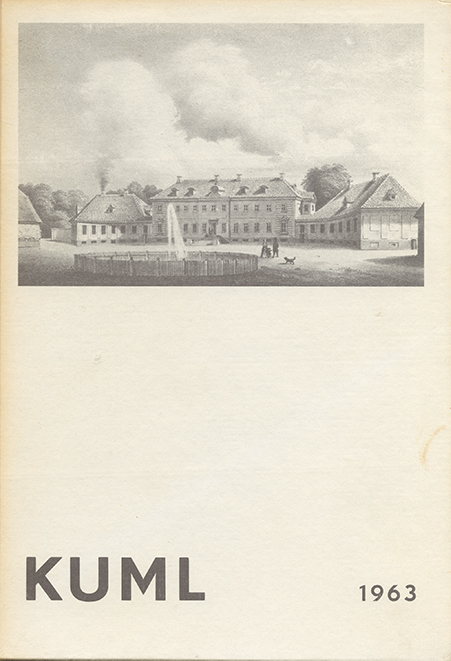Lundegårde-gravpladsen fra yngre jernalder
DOI:
https://doi.org/10.7146/kuml.v13i13.103996Nøgleord:
Lundegaard, cemetary, Lundegård, gravplads, iron age, jernalder, late roman iron age, sen romersk jernalderResumé
The Lundegaarde cemetery from the Late Roman Iron Age
The Late Roman Iron-Age cemetery at Lundegaarde (Nøvling parish, East Himmerland) lies on the top of a hill between three Bronze-Age tumuli. Excavation, by the author for Aalborg Historical Museum, began in summer 1963 and will be continued, as burials from the Late Roman Iron Age have hitherto been a rarity in Himmerland, whereas those from the preceding period are common. The reason for this may be that Early Roman Iron-Age graves are set with large stones, whereas the Late Roman Iron-Age graves are almost stonefree and therefore more easily overlooked.
This preliminary account is therefore only given to provide an archeological basis for the subsequent discussion of the runic inscription on the rosette fibula found in Grave 4 (Fig. 3).
This grave was, exceptionally, surrounded by stones, leaning inward against each other and almost roofing the grave. Slight traces of the body showed that it lay outstretched on its back, with head to the west. Strings of beads at each shoulder must have been borne over the shoulder, as they lay under and over the bones. That on the right was of 48 amber beads, and that on the left of 91 glass and 32 amber beads. Two small silver fibulae, too corroded to be typed, lay by the left shoulder, and the rosette fibula, of silver with gold inlay on the rosettes and the band above the sheath lay by the right shoulder. After conservation it could be seen that the broad pin-sheath bore a runic inscription.
The other contents of the grave were two decorated pottery vessels (Fig. 4), fragments of a knife with oval silver pommel, a single-edged iron knife and a bronze dipper or sieve.
The rosette fibula is of a special Scandinavian type which seems to have been most common in the beginning of the Third Century AD but known and used until the end of the century 3). Three other specimens with runic inscriptions are known, all from rich earth-graves at Himlingøje, Værløse and Næsbjerg. The Lundegaarde fibula is of the same type as that from Himlingøje, and resembles another newly found at the Gammel Hasseris grave! pit near Aalborg (Fig. 5).
The pottery from Grave 4 belongs in both shape and ornamentation to a North Jutland pottery group with South Norwegian affiliations, which is dated by Mackeprang to the Third Century A. D. 4). Pottery from all other graves in the cemetery is of the same type and date, with the exception of one cremation of Early Germanic Iron-Age date.
Oscar MarseenDownloads
Publiceret
Citation/Eksport
Nummer
Sektion
Licens
Fra og med årgang 2022 er artikler udgivet i Kuml med en licens fra Creative Commons (CC BY-NC-SA 4.0).
Alle tidligere årgange af tidsskriftet er ikke udgivet med en licens fra Creative Commons.


